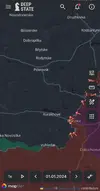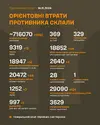Without much fanfare, Taiwan may have become one of the Ukraine air force’s biggest boosters.
According to former Pentagon official Tony Hu, Taiwan has donated its surplus HAWK surface-to-air missile batteries to the Ukrainian air force.
Hu’s comments to YouTube channel RJ War Room seem to confirm
reporting from 2023 hinting at a U.S.-brokered air-defense deal between Taiwan and Ukraine. The Taiwanese MIM-23 Homing All-the-Way Killer missiles, plus their launchers and radars, would complement additional HAWKs donated to Ukraine by the United States and Spain.
In all, Ukraine could deploy as many as 15 of the Raytheon-made HAWK batteries, each with at least six three-missile launchers and associated radars. The Ukrainian air force went to war in February 2022 with around 50 SAM batteries—S-300s and other ex-Soviet models, mostly—and has since swapped out many of the surviving Soviet batteries for more modern Western systems, including American-made Patriots.
Assuming the overall Ukrainian air-defense force structure has remained roughly the same size after subtracting combat losses and adding donated equipment, the HAWKs could comprise nearly a third of the force. Taiwan isn’t a vocal supporter of Ukraine’s war effort, but it is a significant one.
The HAWK is more than 60 years old. But it’s simple, reliable, highly-mobile on its towed launchers, easy to upgrade and works just fine against slower drones, cruise missiles and manned aircraft. As a bonus, the 17-foot HAWK missile is compatible with another, more modern air-defense system that Ukraine uses: the U.S.-Norwegian National Advanced Surface-to-Air Missile System, or NASAMS.
As early as the summer of 2023, U.S. officials were reportedly negotiating with their counterparts in Taiwan to buy back from Taipei the dozen or so HAWK batteries—with around a hundred launchers in all—that Taiwanese forces began retiring back in 2015 and replacing with locally-designed systems and imported NASAMS.
At the time, a big consignment of HAWKs promised to help Kyiv resolve a looming crisis: the imminent depletion of missile stocks for ex-Soviet S-300 and Buk SAM batteries. Since then, Ukraine has diversified its air-defense network by integrating a wide array of foreign missiles, launchers and radars.
That diversification is key. The more different SAM systems Ukraine operates, the more different missile stockpiles and production lines it can tap to arm those systems with replacement missiles as they fire away at nearly daily Russian missile and drone raids. Dozens of countries operate or operated HAWK batteries. Ukraine should be able to source hundreds of missiles, with or without direct U.S. involvement.
The HAWK isn’t in the same class as Ukraine’s best SAM, the Patriot, which ranges as far as 100 miles with an onboard radar seeker. A HAWK missile ranges just 30 or so miles, homing in on energy from a ground-based radar reflecting from the airborne target.
The main downside to the HAWK system is that its radar is susceptible to jamming. It might help Ukraine if integrated the old missiles and launchers with the superior radar associated with the newer NASAMS.





 Periaatteessa tällaiseen tilanteeseen pitäisi päästä vain koukkaamalla vihollisen pehmeään kylkeen ns. kovan kärjen taakse, mutta ryssällä taitaa olla tilanne jo paikoitellen se että kalustolla joka ei ole kovaa kärkeä nähnytkään joudutaan iskemään suoraan puolustuksen kovaa kärkeä päin
Periaatteessa tällaiseen tilanteeseen pitäisi päästä vain koukkaamalla vihollisen pehmeään kylkeen ns. kovan kärjen taakse, mutta ryssällä taitaa olla tilanne jo paikoitellen se että kalustolla joka ei ole kovaa kärkeä nähnytkään joudutaan iskemään suoraan puolustuksen kovaa kärkeä päin


 No, toisaalta, en kyllä ihmettele.
No, toisaalta, en kyllä ihmettele. 

